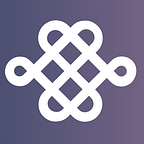Blockchain is a potent technology that makes it possible for people to access and share data in a safe manner. This is a big problem in digital health as the privacy and security of medical data are crucial. Blockchain can improve digital health by making it easier to securely exchange data across fragmented healthcare systems with patient consent.
Overview
Blockchain — a relatively new method of storing digital data has the potential to promote accountability and transparency. A blockchain is a ledger of transactions where each computer network same copy of the ledger. Data entered into the ledger is validated by network members, and once entered, the data cannot be changed (OECD, 2020).
Blockchain technology is the most suitable for transactions with a lightweight digital footprint that provides transparency and integrity of data. In the healthcare field, blockchain can be extremely helpful in verifying identity, managing medical and pharmaceutical supply chains, and dynamic patient consent for data sharing and access permissions. There were many tools created during the COVID-19 pandemic using Blockchain technology because of its characteristics.
For evaluating pharmaceutical breakthroughs, there are well-established methods; however, there is no corresponding framework for evaluating other sorts of innovations, including digital solutions. Health systems may face challenges due to the information imbalance between software suppliers and buyers. This is especially troublesome for blockchain-based solutions because there aren’t many real-world healthcare implementations of the technology for us to learn from.
Data Management
In a conventional database, the information is kept on a solitary, central server (or network of servers) under the control of a single database administrator. A blockchain, on the other hand, is an approach to data management where data is added to an electronic ledger distributed throughout a peer-to-peer network without being controlled by any central data administration.
One of the most useful characteristics of blockchain is the “append only” structure, which means you can enter new data into the storage but once it has been added, it is unable to be deleted or edited by anyone. This structure helps in maintaining the consistency and validity of the users’ data, which is especially advantageous in managing patients’ electronic health records (EHRs). With Blockchain technology, the number of people participating in a network is unlimited.
Identity Management
Good outcomes in the health sector depend on the accurate and verifiable identification of people (such as patients and providers) along with organizations (such as hospitals, pharmacies, academics, and other research institutes). Secure identification is made possible by a blockchain, which can enhance integrity and transparency while preventing differential versioning of IDs. This will become more crucial as data from wearable medical devices and the Internet of Things (IoT) start to flow, enabling, for instance, reliable data matching with people’s electronic medical records.
Individual and institutional healthcare providers must offer correct and current information about their location and service available so that, for example, patients can find them, accrediting agencies can recognize them, and payers can appropriately remit payment. The validity and accuracy of the data will be enhanced by blockchain technology. IVIRSE has successfully applied this technology to create DataHub, in which users’ identities are guaranteed to be secure and transparent.
Patient Consent And Data Access Permissions
By using specific credentials and an encryption key, blockchain can provide a transparent, auditable method for people to grant access to their sensitive health data to other parties. In order to provide direct health care or to allow research, statistical analysis, or other secondary uses of their data, this includes granting permission for health professionals, service providers, and other relevant actors (such as researchers and social care providers) to access their medical records and other information.
The incremental or “dynamic” permission allowed by blockchain offers a very helpful substitute to “blanket or one-time-only” consent models because electronic data may be utilized and reused indefinitely and new research questions and goals for data use are always emerging. If someone chooses to alter the conditions of their permission or consent, the modified terms can be added as a new block that supersedes the earlier instructions on the chain.
With this technology, IVIRSE’s DataHub can protect users’ electronic health records. Users’ information is completely safe here as no parties (including IVIRSE) have access to users’ data without the owners’ permission. Users’ personal information will be transferred from IVIE to IVIRSE’s distributed data storage and is guaranteed confidentiality and data integrity. You can share your EHRs without worrying about leaking data because only the owner of the EHR with the private key can access and view the information.
Summary
Blockchain is an effective solution for many ongoing problems in the healthcare sector since it can lower expenses, secure patient data, and enhance the overall experience of patients and medical professionals. There are many applications and uses for blockchain technology in the healthcare industry, from enhancing the safe transfer of patient medical records and controlling the medication supply chain to preventing disease outbreaks and assisting genetic code researchers.
References
OECD. (2019). Recommendation of the Council on Health Data Governance. OECD/LEGAL/0433, Paris. Retrieved from https://www.oecd.org/health/health-systems/Recommendation-of-OECD-Council-on-Health-DataGovernance-Booklet.pdf
